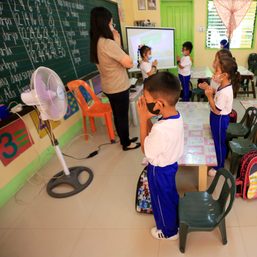SUMMARY
This is AI generated summarization, which may have errors. For context, always refer to the full article.
The National Economic and Development Authority (NEDA) estimated the long-run total cost of the COVID-19 pandemic and quarantines for the next 40 years would be P41.4 trillion, Socioeconomic Planning Secretary Karl Chua said on Saturday, September 25.
“The present and future costs are estimated at P41.4 trillion in net present value terms. Broken down, in 2020, we lost P4.3 trillion; in the next 10 to 40 years, we estimate that we will lose up to P37 trillion,” Chua said in a statement.
Chua said the NEDA had been working to come up with this estimate for the past six months.
The NEDA also projected that consumption and investments are likely to be lower in the next 10 years due to reduced demand in sectors that require physical distancing, such as tourism, dining, and public transportation.
The national government also mandates certain percentages at which certain businesses can operate in each quarantine level. According to the NEDA, for as long as businesses cannot operate at 100%, tax revenues will be lower.
The NEDA found that the estimated total loss due to lower consumption is P4.5 trillion. Meanwhile, loss in private investment and returns in the same period is around P21.3 trillion.
“We expect the economy to converge to the pre-pandemic growth path by the 10th year. While we will recover to the pre-pandemic level by the end of 2022 or early 2023, it will take several more years before we converge to our original growth path,” Chua said.
Affected productivity
Apart from reduced consumption, the NEDA also determined that there will be a decrease in workers’ productivity due to untimely death, illness, and the lack of nationwide face-to-face education.
The impact on productivity is “likely to be permanent” over the next 40 years, or the average number of years someone is expected to work in their lifetime.
NEDA pegged the estimated productivity losses at P15.5 trillion for the next 40 years. Of this amount, P4.5. trillion could be the losses linked to untimely deaths and sickness. This also accounts for additional healthcare costs.
Chua said the economy lost P230 billion in 2020 from the one-year school closure.
The national government’s refusal to open up schools nationwide may also cost the country P11 trillion in future wages and productivity. This includes the lost wages of parents who forego or reduce work hours to facilitate their children’s online classes.
The Asian Development Bank (ADB) has similar data on the effects that prolonged distance learning has on quality of education. According to the ADB, every year of lost schooling leads to a 10% permanent decrease in future wages.
The Philippines opened school year 2021-2021 on September 13. Prior to this week’s announcement of the plan to reopen up to 120 schools for limited face-to-face classes, the Philippines was one of the last two countries in the world that had yet to reopen schools since the World Health Organization declared the pandemic in March 2020.
The NEDA, using United States data adjusted for Philippine education levels, estimated that online and modular learning is only 37% as effective as face-to-face learning.
3-pillar strategy
Chua explained that to address the impact of the pandemic and mitigate its long-term scarring effects, the government would need to employ a three-pillar strategy. This includes:
- accelerating the vaccination program by expanding vaccination sites and using new technologies
- opening the economy safely through localized lockdowns and pilot face-to-face classes
- fully implementing the recovery program, especially the 2021 budget
On Monday, September 20, President Rodrigo Duterte allowed pilot face-to-face classes in 120 schools in areas deemed to be low-risk for COVID-19.
Some medical schools have also been allowed to bring their students back on campus.
The Department of Education, meanwhile, has been asking for additional budget to augment its distance learning program in 2022. – with reports from Michelle Abad/Rappler.com
Add a comment
How does this make you feel?


![[Time Trowel] Evolution and the sneakiness of COVID](https://www.rappler.com/tachyon/2024/02/tl-evolution-covid.jpg?resize=257%2C257&crop=455px%2C0px%2C1080px%2C1080px)




![[EDITORIAL] Ano sana ang takeaway ni Sara Duterte sa firesale ng mga laptops?](https://www.rappler.com/tachyon/2023/05/animated-DEPED-laptop-fiasco-carousel.jpg?resize=257%2C257&crop_strategy=attention)


There are no comments yet. Add your comment to start the conversation.